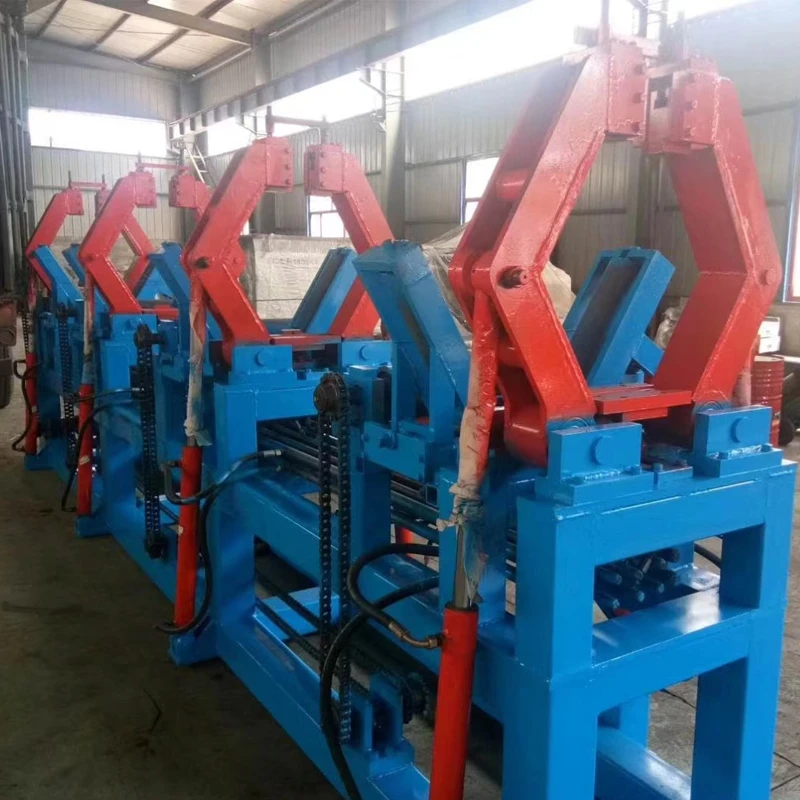steel pipe making machine
The Evolution and Technology of Steel Pipe Making Machines
The steel industry has long been a foundational pillar of modern infrastructure, playing a crucial role in construction, transportation, and a myriad of industries that rely on steel products. Among the myriad of devices and machines that contribute to steel production, steel pipe making machines stand out as essential tools in the fabrication of steel pipes. This article delves into the evolution, technology, and significance of steel pipe making machines in today’s industrial landscape.
Historical Background
The production of steel pipes dates back centuries, evolving from hand-forged methods to highly sophisticated automated systems. Historically, pipes were manually crafted for specific purposes, but with the advancement of metallurgy and industrial processes, the demand for standardized and high-quality pipes surged. This growth prompted innovations in machinery that could produce steel pipes more efficiently and at a larger scale.
By the late 19th century, the industrial revolution had laid the groundwork for modern steel pipe making processes. The introduction of welding technology allowed for the production of longer and stronger pipes, which led to the development of various pipe making machines. Early machines were often cumbersome and required significant manual labor, but as technology progressed, automation began to revolutionize the steel pipe industry.
Modern Steel Pipe Making Machines
Today, steel pipe making machines encompass a range of different technologies and processes
. The primary methods of production include1. Seamless Pipe Production This process involves the creation of pipes without seams or welds, achieving superior strength and pressure-resistance qualities. Advanced techniques like the rotary piercing process and elongation mill technology are utilized to achieve seamless pipes.
2. Welded Pipe Production Welded pipes are produced by rolling steel sheets into a cylindrical shape and then welding the edges together. The electric resistance welding (ERW) and submerged arc welding (SAW) are two popular methods employed in this segment. These processes are optimized to ensure high-speed production without compromising on quality.
steel pipe making machine

3. Cold Forming Cold forming involves shaping steel at room temperature, which enhances the mechanical properties of the material. This method is often used for producing specialized pipes that require tight tolerances.
Advancements in Technology
Recent advancements in technology have significantly enhanced the capabilities of steel pipe making machines. Smart manufacturing techniques incorporating Industry 4.0 concepts—such as IoT integration, real-time monitoring, and AI-driven predictive maintenance—are increasingly prevalent in modern pipe production facilities.
Automated systems can now track production efficiency and quality metrics continuously, enabling manufacturers to minimize waste and maximize productivity. The use of advanced materials science has also improved the design and functionality of these machines, allowing them to produce pipes with specific metallurgical properties tailored to individual applications.
Furthermore, energy-efficient technologies are becoming standard, addressing the growing concerns about environmental impact. The push towards sustainable manufacturing processes has led to innovations in recycling steel scrap and reducing emissions during production.
The Importance of Steel Pipe Making Machines
Steel pipes are integral to various sectors, including oil and gas, construction, and water management. The durability and reliability of these pipes can significantly impact the safety and efficiency of infrastructure projects. Consequently, the role of steel pipe making machines is paramount. They not only ensure the production of high-quality steel pipes but also facilitate the rapid scaling of production to meet industrial demands.
In conclusion, steel pipe making machines represent a critical convergence of history, technology, and industrial necessity. Their evolution reflects broader trends in manufacturing and technology, and they continue to be integral to the development of modern infrastructure. As the steel industry advances and adapts to new challenges, these machines will undoubtedly remain at the forefront, driving innovation and ensuring that the demand for steel pipes is met with efficiency and quality.
-
High Frequency Straight Seam Welded Pipe Production Line-BzZhou Xinghua Machinery Equipment Manufacturing Co., LTD.|line pipe steel&welded gas pipeNewsJul.30,2025
-
High Frequency Straight Seam Welded Pipe Production Line-BzZhou Xinghua Machinery Equipment Manufacturing Co., LTD.|High Precision&Automated SolutionsNewsJul.30,2025
-
High Frequency Straight Seam Welded Pipe Production Line - BzZhou Xinghua Machinery Equipment Manufacturing Co., Ltd.NewsJul.30,2025
-
High Frequency Straight Seam Welded Pipe Production Line-BzZhou Xinghua Machinery Equipment Manufacturing Co., LTD.|Precision Welding, High EfficiencyNewsJul.30,2025
-
High Frequency Straight Seam Welded Pipe Production Line|BzZhou Xinghua|Precision Welding&EfficiencyNewsJul.30,2025
-
High Frequency Straight Seam Welded Pipe Production Line - BzZhou Xinghua|Precision Engineering&EfficiencyNewsJul.30,2025


